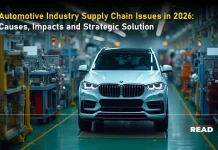Planet Labs PBC , a leading provider of daily Earth data and insights, announced that its first hyperspectral satellite, Tanager-1—made possible by the Carbon Mapper Coalition and its philanthropic partners—is ready for launch. The spacecraft arrived at Vandenberg Space Force Base on June 3rd in preparation for liftoff as early as July on board the Transporter-11 Rideshare mission with SpaceX. Tanager-1 will be the first of a next-generation hyperspectral fleet which will expand Planet’s imaging capabilities in the spectral domain to complement the existing imaging capabilities in the temporal and spatial domains offered by the PlanetScope, SkySat, and Pelican missions.
Following on-orbit commissioning, Tanager-1 is planned to provide hyperspectral data both in support of the continued partnership with nonprofit organization Carbon Mapper and Planet’s broader commercial mission. Tanager-1 was enabled by the Carbon Mapper satellite program, which allowed Planet to combine its cutting-edge agile aerospace and smallsat bus technology with the state-of-the-art imaging spectrometer design developed at NASA’s Jet Propulsion Laboratory. This collaboration plans to provide scientific-grade data to enable action on sustainability use cases such as greenhouse gas point-source emissions.
“This important collaboration with Planet and Carbon Mapper is an innovative way to confront Earth’s most urgent climate challenges head-on,” said Laurie Leshin, Director of NASA JPL. “Our imaging spectrometer technology and expertise, leveraged and deployed on Tanager-1, will enable a broad range of stakeholders to pinpoint methane super-emitters and take action to mitigate them. The work of the Carbon Mapper Coalition will truly have a global impact, and we are proud to take part in ensuring mission success.”
Also Read: RTX provides Blue Canyon Satellites for NASA Polar climate mission
Future Tanager imagery will be analyzed by expert scientists at Carbon Mapper to identify methane and carbon dioxide (CO2) “super-emitters” around the world. Planet expects to provide commercial hyperspectral data for a variety of use cases including emissions monitoring, biodiversity assessments, vegetation analysis, minerals mapping, and water contaminant assessments.
“I’m thrilled that Tanager has arrived at the launch site. This will provide hyperspectral data that will enable myriad applications from sustainability to security, and complement the data from existing Planet satellite fleets,” said Will Marshall, Co-Founder and CEO of Planet. “I am very proud to be a part of this unique public-private partnership with NASA JPL and Carbon Mapper.”
Planet’s hyperspectral constellation is designed to provide imagery with continuous spectral information across the visible and shortwave infrared (VSWIR) regions. Tanager’s imaging spectrometer leverages JPL’s heritage in imaging spectrometer design and development through decades of similar airborne and spaceborne sensors like the Airborne Visible/Infrared Imaging Spectrometer (AVIRIS) and Earth Surface Mineral Dust Source Investigation (EMIT). The Tanager-1 imaging spectrometer will be the most complex optical system ever launched by Planet, and its delivery to the launch site demonstrates a host of new capabilities, expertise, facilities, and testing acumen at Planet.
In recent months, the integrated Tanager-1 spacecraft successfully completed a rigorous series of on-the-ground tests designed to ensure that the integrated satellite can withstand the harsh environments that it will endure at launch and in orbit. Pelican-1, a technology demonstration that successfully launched late last year, shares the same smallsat bus platform with Tanager-1. Together, the successful on-the-ground and in-orbit tests have proven Planet’s agile aerospace approach as applied to the larger and more complicated spacecraft that utilize this next-generation smallsat bus.
“Shipping the first Tanager satellite is an enormous step in realizing the vision of our unique public-private partnership with Carbon Mapper and NASA JPL,” said Mark Keremedjiev, Tanager Mission Director at Planet. “This milestone in our program is a shared achievement across a wide range of contributors and I am exceptionally proud of the team that has brought us to this point. I am excited to see the data our system will produce on-orbit and look forward to tackling the host of challenges spaceborne hyperspectral remote sensing is suited to address.”
In addition to Tanager-1, Planet will be launching 35 SuperDoves that will contribute to Planet’s flagship daily, global monitoring mission. PlanetScope data is used by hundreds of customers in defense and intelligence, civil government, and commercial markets to take informed action, and better contextualize events they’re seeing on the ground today. Planet’s daily scan and deep archive of data for every point on Earth is unique within the industry and provides customers with a continuous and complete view of their areas of interest. Further, the archive acts as a rich training ground for predictive machine-learning and advanced artificial-intelligence models, accelerating users’ ability to draw insights from the terabytes of data collected by Planet each day.
SOURCE: Businesswire




